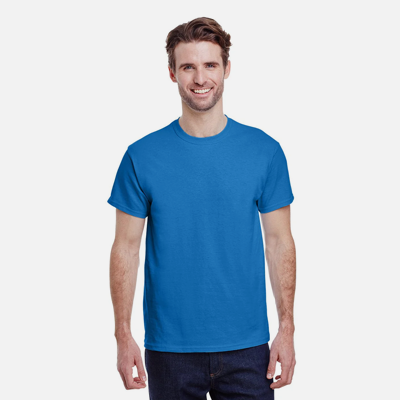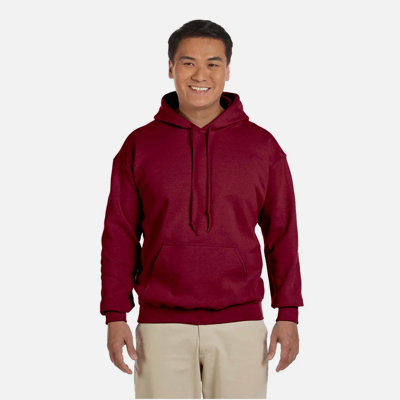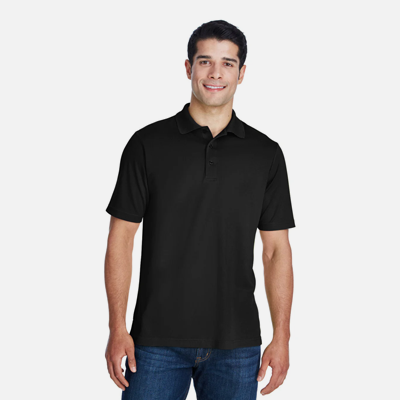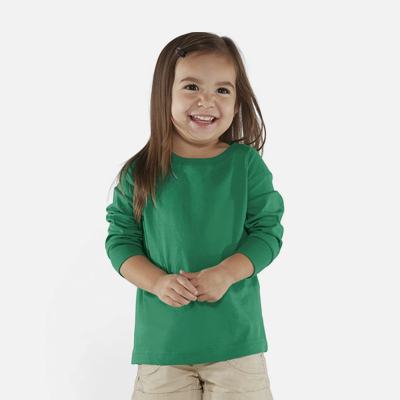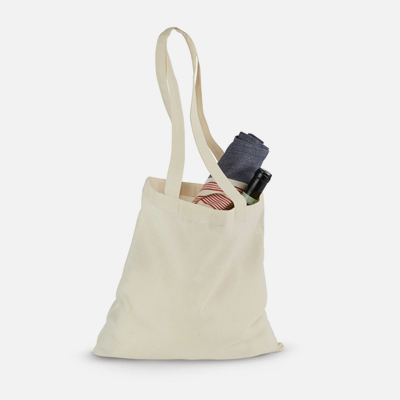Direct-to-Film (DTF) transfers have become a go-to solution in the custom apparel industry, prized for their exceptional detail, durability, and vibrant colors. But what if you could take your designs even further? Special effects have traditionally been the domain of screen printing and cut vinyl. DTF technology now offers exciting possibilities for adding that extra "wow" factor to your creations.
In this guide, we explore how to elevate your DTF transfers with eye-catching special effects. You'll discover simple techniques to add glitter, create vintage-inspired distressed looks, and even combine DTF with other customization methods. Learning these techniques will empower you to craft unique, high-value apparel that stands out from the crowd. Let's get started.
Table of contents
- Glitter Effect
- Distress Effect
- Rhinestone Effect
- Pattern Effects
- Puff Effects
- Other Types of Special Effects
- Tips for Combining Techniques
- Conclusion

Glitter effect
Adding a touch of sparkle to your designs can give them a magical, elevated look. Glitter effects used to require special inks and messy processes, but with glitter DTF transfers, you can achieve stunning results easily and consistently.
What are glitter DTF transfers?
Glitter DTF transfers incorporate a layer of colorful, translucent glitter directly onto the transfer film. This glitter layer combines permanently with the ink and hot melt adhesive during the printing process, allowing any design to sparkle without the need for additional materials or steps.

How to use glitter DTF transfers
1. Design considerations:- Keep in mind that glitter will subtly affect your design's contrast. Due to the glitter overlay, blacks may appear lighter and whites slightly darker, depending on the lighting.
- Plan your design with this in mind, emphasizing bolder elements or larger text for maximum impact. Regardless of the slightly decreased contrast, your whole design will sparkle.
- Use our gang sheet builder to upload your design and arrange multiple copies.
- Select "glitter" as the film style when placing your order.
- Use a heat press to apply your glitter DTF transfer just as you would a standard transfer.
- Follow the recommended temperature, pressure, and time settings for optimal results.
Combining glitter and standard DTF
For even more visual interest, you can combine glitter and standard DTF transfers in a single design. This technique creates striking contrasts and can draw attention to specific elements of your artwork.
How to create a partial glitter effect
- Create two separate files from your original design in your design software.
- In one file, remove the glitter elements. In the other, remove the standard DTF areas.
- Make sure there are no overlapping areas between the two files.
- Upload both files separately, selecting "glitter" for the appropriate one.
- Applying to your garment:
- Press the standard DTF transfer first and peel it as normal.
- Carefully align the glitter DTF transfer.
- Press the glitter transfer and peel it.
- Give the combined print a final press for optimal adhesion.
|
Pro Tip: Consider leaving a small gap between glitter and non-glitter elements in your design to make alignment easier. This approach is more forgiving during the pressing stage and can prevent accidental overlaps. |

Distress effect
The distressed look doesn't mean feeling overwhelmed by your print job-it's a popular style that can give your designs a vintage or weathered appearance. This effect adds character and creates a softer, more breathable print by breaking up the design.
What is a distressed DTF transfer?
Unlike glitter transfers, distressed DTF transfers don't require special film. Instead, the effect is created during the design stage, allowing endless customization possibilities.

How to create distressed DTF transfers
1. Prepare your files:- You'll need two files: your main design and a distressed texture.
- For best results, use raster files for more control. Learn more about vector vs. raster files.
- Thousands of distress textures are available online, or you can create your own.
- Import the texture into your graphics application as a new layer in your design file.
- Scale the texture to match your design size.
- Create a crisp black-and-white image using the "Levels" and "Threshold" adjustments.
- This step is crucial to avoid soft edges that can cause a halo effect on your final print.
- Select all the black (or white) pixels in the distress layer.
- Ensure your selection has no anti-aliasing (soft edges).
- Delete these selected pixels from your main design layer.
- The remaining areas represent where the garment fabric will show through.
- Experiment with moving or scaling the distress layer for different effects.
- To maintain crisp edges when scaling, convert the layer to a smart object first.
- Prepare for printing:
- Once satisfied, your distressed design is ready to upload for DTF printing.
6. Application tips:
- Ensure proper heat and pressure for a complete transfer.
- Peel carefully, as distressed designs have many small, separated elements.
- Always perform a final press for a matte finish and optimal durability.

Combining distress effect with standard DTF
For added visual interest, you can distress only portions of your design. Similar to the steps above, but apply the distress texture only to specific areas:
- Create a duplicate layer of your design.
- On one layer, remove the areas to remain solid.
- On the other, remove the areas to be distressed.
- Apply the distress effect to the appropriate layer.
- Combine the layers for your final design.
|
Pro Tip: When creating partial distress effects, consider your design's overall balance and readability. You may want to avoid using distress on areas with high detail or small type. Use the effect strategically to highlight certain elements or create depth in your artwork. Keep in mind that when you do a partial effect, you will lose the illusion of an authentically aged print. |

Rhinestone Effect
Want to add some major sparkle to your designs? Enter the rhinestone effect, sometimes known as "bedazzling." This eye-catching technique is perfect for highlighting logos, emphasizing text, or adding a touch of glamour to specific design elements.
Rhinestone DTF transfers
Rhinestone DTFs offer a unique way to incorporate glittering elements into your designs. These fall under our DTF patches category, which means pricing may differ slightly from standard DTF transfers.
Incorporating rhinestone effects into your DTF designs allows you to create high-value, eye-catching apparel that sparkles. This technique is particularly effective for special occasion wear, promotional shirts, or any design where you want to add a touch of glamour and sophistication.
Rhinestone DTF transfers consist of individual rhinestones arranged in a grid pattern. Each stone is free-floating, with no background, allowing for seamless integration with your designs. You can use these transfers alone or combine them with standard DTF transfers for a multi-dimensional effect.

How to combine rhinestone effects with your DTF designs
1. Design preparation:- Create your main design as usual.
- Identify the areas where you want to add rhinestones.
- Remove these sections from your primary design and save them as a separate file.
- Upload your main design for standard DTF printing.
- Separately, upload the rhinestone sections in the custom patches area of our website.
- Start by pressing your standard DTF transfer onto the garment.
- Once cooled and peeled, carefully position the rhinestone DTF patch.
- Press the rhinestone patch according to the provided instructions.
- Give the entire design (standard DTF and rhinestones) a final press to ensure everything is securely bonded.
|
Pro Tips:
|

Pattern effects
Adding a pattern texture to your design can create unique and interesting looks while providing a lighter, more breathable, and flexible print. Similar to the distress effect, pattern effects break up the print surface area but in a more controlled and uniform way.
Pattern texture DTF transfers
Pattern textures are created during the design stage, resulting in a single DTF transfer to press. The concept involves strategically adding (or, more accurately, removing) tiny holes, lines, or shapes from your design. Think of it like creating a mesh sports jersey with small, deliberate openings.
With pattern effects, you can create DTF transfers that look unique and feel great to wear. This technique is particularly effective for athletic wear, summer apparel, or any design where you want to balance visual interest with comfort.

How to create a pattern texture DTF transfer
1. Find or create a pattern:- Choose from thousands of patterns available online or create your own.
- The pattern will determine the texture of your final print.
- Import the pattern into a new layer of your design file.
- Scale the pattern to fit your design.
- Invert the pattern if necessary, depending on your desired effect.
- Use the threshold adjustment to create crisp black-and-white pixels.
- Ensure your pattern elements aren't too small - aim for a minimum size of 0.2 inches to ensure proper printing.
- Select all the pixels in your pattern layer.
- Use this selection to remove these areas from your main design layer.
- You can apply the pattern to your entire design or specific sections for varied effects.

Examples of pattern textures
- Uniform dots: This creates a polka-dot effect within your design.
- Uniform lines: Adds a striped or hatched texture to your print.
- Uniform shapes: Incorporates repeating geometric shapes for a unique look.
- Halftones: Gradual transition from solid to textured areas.
- Water ripples / Waves: Adds a fluid, organic texture to your design.
- Geometric patterns: Incorporates repeating angular shapes for a modern feel.
- Custom organic lines: Create a hand-drawn or natural texture.
-
Concentric lines/shapes: Adds depth and movement to your design.
|
Pro Tips:
|

Puff effects
While puff effects are traditionally associated with screen printing, we've brought this dimensional technique to the world of DTF with our specialized DTF Patches. These patches offer a pre-raised effect that adds depth and texture to your designs.
Puff effect DTF patches
Puff Effect DTF patches allow you to incorporate raised elements into your designs, creating a tactile and visually interesting finish without the need for special inks or additional pressing techniques. By incorporating puff effect patches into your DTF designs, you can create apparel with a unique tactile element that stands out both visually and to the touch.
These patches are pre-made, custom-designed elements with a raised surface. Unlike traditional puff printing, they come already dimensionalized and require no special pressing techniques to achieve the effect. This technique is particularly effective for adding a premium feel to logos or creating designs with a subtle yet impactful dimensional quality.

Types of puff effect patches:
You can use these patches as standalone elements or creatively combine them with standard DTF transfers. Some popular types include:
How to incorporate puff effects into your DTF designs
1. Design preparation:- Create your main design as usual.
- Identify a smaller, specific area where you want to add the puff effect, such as a logo or small graphic element.
- Upload your main design for standard DTF printing if applicable.
- Submit the puff effect element (e.g., logo) in the custom patches section of our website, specifying the desired puff effect type.
- If using with standard DTF, apply your main DTF transfer first.
- Once cooled and peeled, carefully position the Puff Effect DTF patch.
- Press the puff patch according to the provided instructions.
- Give the entire design a final press to ensure all elements are securely bonded.
|
Pro Tips:
|

Other types of special effects
While DTF transfers offer incredible versatility on their own, combining them with other apparel customization techniques can open up a world of unique design possibilities. This section explores how to integrate DTF transfers with various decorating methods for truly one-of-a-kind creations.
Combining decorating techniques
By strategically combining DTF transfers with other customization methods, you can create standout apparel. However, planning your design carefully and executing each technique in stages is crucial for the best results.
Options for combining decorating techniques:
- Cut vinyl offers a range of special effects that beautifully complement DTF transfers. Options include glitter, metallic foil, neon, iridescent, and even glow-in-the-dark. Vinyl can be pressed either before or after DTF transfers as long as there is not much overlap.
- Screen printing can be combined with DTF for unique effects. Always print and cure screen-printed elements before adding DTF transfers. You can consider using special screen printing inks like puff, reflective, and neon inks.
- Fabric Paint - For truly custom designs, consider adding hand-painted elements using fabric paint. This can be done either before or after applying DTF transfers as long as the design areas are separate.
- Appliques - A wide variety of appliques, including embroidery, sequins, lace, fabric, and more, can be used in conjunction with DTF transfers or applied on top of them for added dimension and texture.

Tips for combining techniques
By mastering the art of combining DTF transfers with other customization techniques, you can create truly unique, high-value apparel that sets your brand apart. The key is careful planning, attention to detail, and a willingness to experiment with combinations to find what works best for your designs.
- Press heat transfer vinyl and DTF transfers separately, as they may require different heat and pressure settings.
- Avoid overlapping different elements of the design, as this can lead to application issues, especially when applying DTF transfers last.
- Use layers in your design software to plan how different elements will look when combined, even though they'll be separate files for production.
- Be mindful of the overall surface area coverage. Excessive print area can result in a heavy, less comfortable, and less breathable garment.
- When selling online, include angled close-up photos to showcase the dimensionality and texture of your multi-technique designs.
- Don't hesitate to contact our team for assistance with artwork adjustment and optimization. You can also connect with our community on Facebook for ideas and support.

Elevate your DTF designs with special effects
DTF printing is still relatively new in the custom apparel industry, and creative minds are exploring new possibilities. By incorporating special effects techniques into your DTF transfers, you can elevate your printed garments to new heights of creativity and marketability.
Experimenting with different approaches is key to finding your unique style and offering. The beauty of DTF transfers is that they make this experimentation accessible, affordable, and easy to execute. Whether adding a touch of glitter, creating a vintage distressed look, or combining DTF with other decorating methods, you're limited only by your imagination.
Ninja Transfers is committed to helping you succeed. We offer the best custom-printed DTF transfers and a wide range of high-quality blank apparel to bring your creations to life. Our team is always here to support you in pushing the boundaries of what's possible with DTF printing.
To further enhance your design skills, we recommend checking out our guide to designing t-shirts that sell. If you're just starting out, our top 10 DTF design tips for beginners will get you on the right track.








